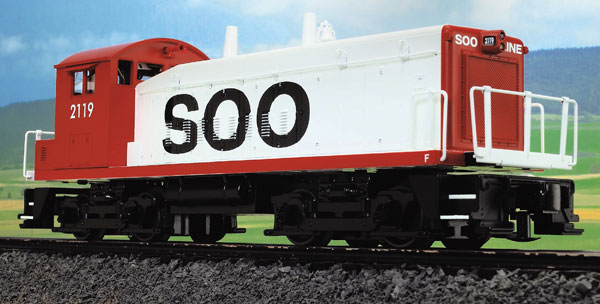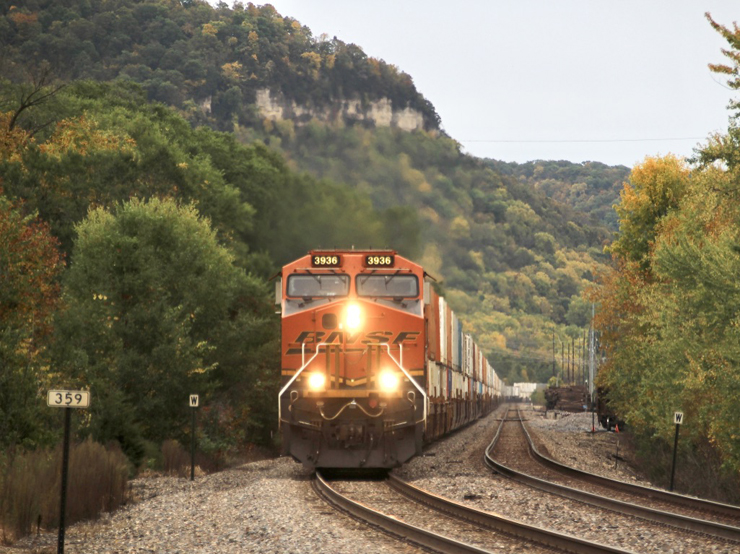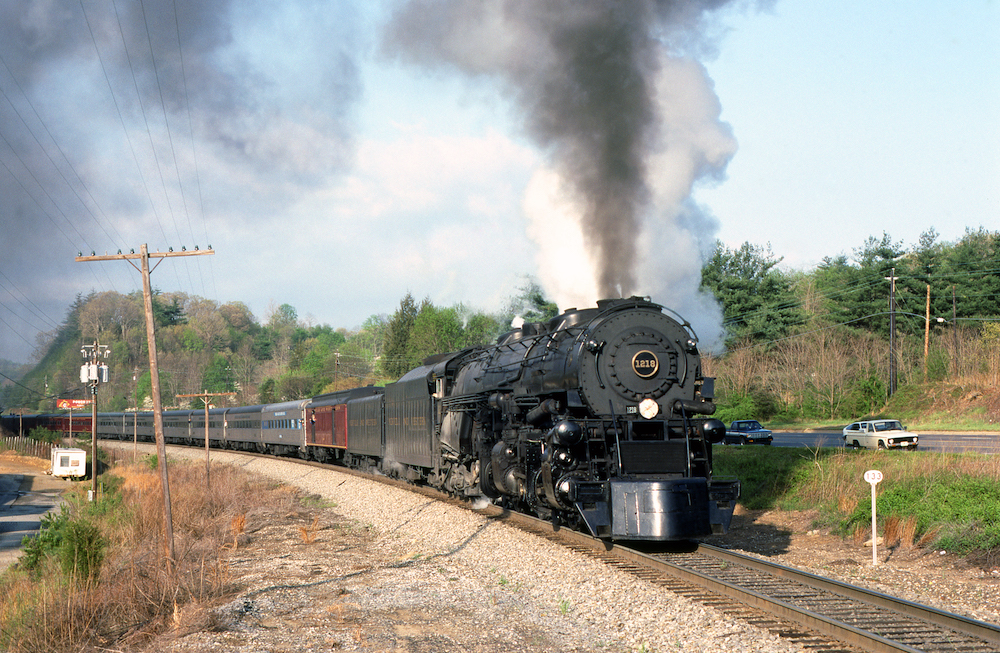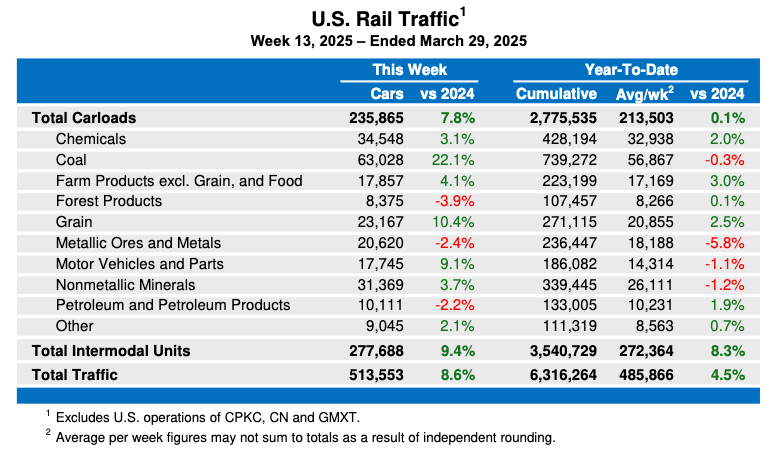By sharing an almost generic body with other models from the EMD catalog, the SW9 fits right in on a layout set anytime between 1950 and today. These 800-horsepower diesels were built from 1951 to 1953, with slightly more than 700 units sold to American and Canadian railroads and industrial operators.
The RailKing version of this locomotive has a good level of detail, capturing the main points of interest down to the six-louvered battery box. Cast-in hatches, hinges, and handles are clean and crisp.
The length of the model’s frame is 46 feet in O scale (111/2 inches), slightly longer than the prototype’s 40-foot, 6-inch length.
I was pleasantly surprised to find safety tread cast into the decks on either side of the engine hood, on both pilot decks, and even in a narrow patch between the grab irons leading into the cab.
The tread is evidence that MTH pays attention to the little details that matter to discerning modelers. However, there isn’t any interior detail inside the cab. All you’ll find inside is the second of the locomotive’s two can-style motors.
The colorful red, white, and black Soo Line paint scheme is attractive, though there were quite a few spots where white showed through the black “SOO” lettering placed over the body-shell louvers.
On the test track
On the test track and home layouts, the model performed well.
Our SW9 has MTH’s LocoSound circuitry, which is MTH’s lower-priced option to ProtoSound 2.0 circuitry. It is a basic sound system that includes diesel locomotive sounds, a horn, and a bell.
While the SW9 includes cruise control (a real bargain in a $199.95 locomotive) the model does not include a command-control receiver and or a diesel smoke generator.
Our low-end speed measurement averaged 4.4 scale mph, and the high-end speed averaged 75 scale mph. Drawbar pull for the 4-pound, 1-ounce locomotive was 2 pounds.
Our sample SW9 has more test mileage than most locomotives. Shortly after finishing our customary performance tests, we used the locomotive on our staff-built Coal Terminal & Trestle O-27 layout while the it was on display at Milwaukee’s annual Trainfest show (see the December through March issues for a series of stories on building the layout). The SW9 ran up and down the grades on our layout during the entire run of the two-day show. The SW9 continued at another two-day show in Madison, Wis., in February.
The locomotive’s cruise control took care of the layout’s steep grades in fine fashion, allowing for hands-off operation for hours on end. While the SW9’s pulling performance was admirable, it became clear immediately that one of the layout’s track switches, uncoupling buttons, or sections of insulated rail was automatically turning on and off the LocoSound bell.
Since the action was consistent we figured a tiny track spark was setting off the bell command, but we were unable to trace the problem.
On other layouts, however, the bell did not start ringing on its own.
Bell ringing aside, if you’re looking for an economical diesel locomotive with good performance numbers, an entry-level sound system, and a first-rate speed control system, look no further than the RailKing SW9.














